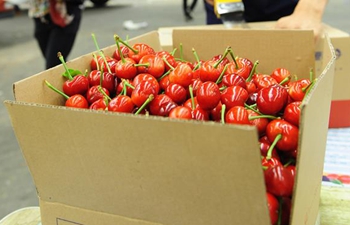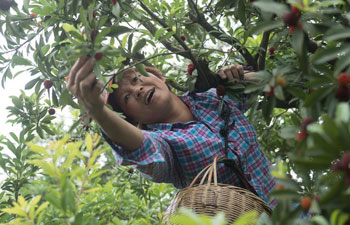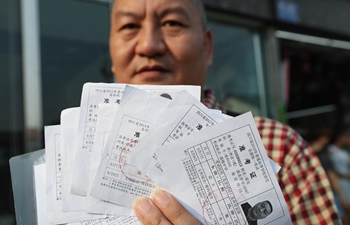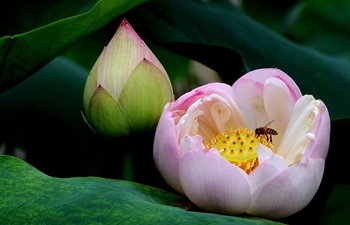KUNMING, June 9 (Xinhua) -- At least twice a week, Ai Si, 12, takes two art classes at school, muddying himself in clay and learning how to use a potter's wheel.
The sixth-grader carefully rolls a piece of clay into several strips, circling them in layers on a pottery wheel, while rotating the wheel slowly to make a jar.
"The slow-wheel pottery manufacturing of the Dai ethnic group is a national intangible cultural heritage with more than 4,000 years of history, and is now being rejuvenated in the hands of our students," said Shi Dongfeng, an art teacher at Ai's school.
Ai is one of around 2,500 pupils doing such classes at the central primary school in Menglong County of Xishuangbanna Dai Autonomous Prefecture in southwest China's Yunnan Province.
Dai pottery once prevailed in Xishuangbanna, where Dai people make up 30 percent of the population. Dai pottery can hold rice and water, and be made into cups and vases.
"The pottery can absorb impurities, making water clean to drink, as they are made of crude clay with large interspace among clay particles," Shi said. "It is also environmentally friendly. After a few decades, pottery becomes earth again after being put underground."
In the 1990s, a pottery pot could be exchanged for two pots of corn or rice for the same volume, according to Yu Nan'en, a slow-wheel potter. "At that time almost everyone knew the skill."
However, the pottery has declined as advances in society have given consumers more choice.
"Compared with iron pans, which can be easily bought in supermarkets, handmade-ware is too time-consuming," Yu said. "Parents don't like their children to learn it, as playing with mud often means getting dirty all over."
"If we didn't take action, less people would know about Dai pottery, especially kids. One day, the thousands-year-old heritage may disappear," Shi said.
In 2016, Shi's school invited Yu, as well as practitioners of other national intangible cultural heritage, such as Dai-style brocade and papermaking, to train art teachers for handicraft classes.
"The clay is natural and clean, gathered from about five meters below the ground," Shi said.
A specialized courtyard of more than 300 square meters was established to provide a better learning environment. It has a two-story bamboo house in the Dai-style serving as the classroom, a firing kiln and a pond for paper pulp.
The classroom exhibits hundreds items of handmade pottery by the students, some of which are traditional pots and jars and some are cartoon figures and animals such as Ultraman or of elephants.
"We did this with a very simple purpose, to let kids know more about the art and feel it deeply by practicing step by step," Shi said. "It doesn't matter whether their pottery is beautiful or not."
Pupils love the class, and Shi even has to ask them to leave after each 40 minute class.
"They are very proud of what they make, writing names on their works and sharing experiences with each other. Though some of the pottery is odd and funny shaped, they represents the creativity of our students," Shi said.
The school also displays dozens of handmade papers and has enlarged the brocade patterns drawn by the students to print them on the main buildings.
"Intangible cultural heritage is the essences of our ancestors and it is important that our children could know about it and are willing to pass it down," Shi said.

















